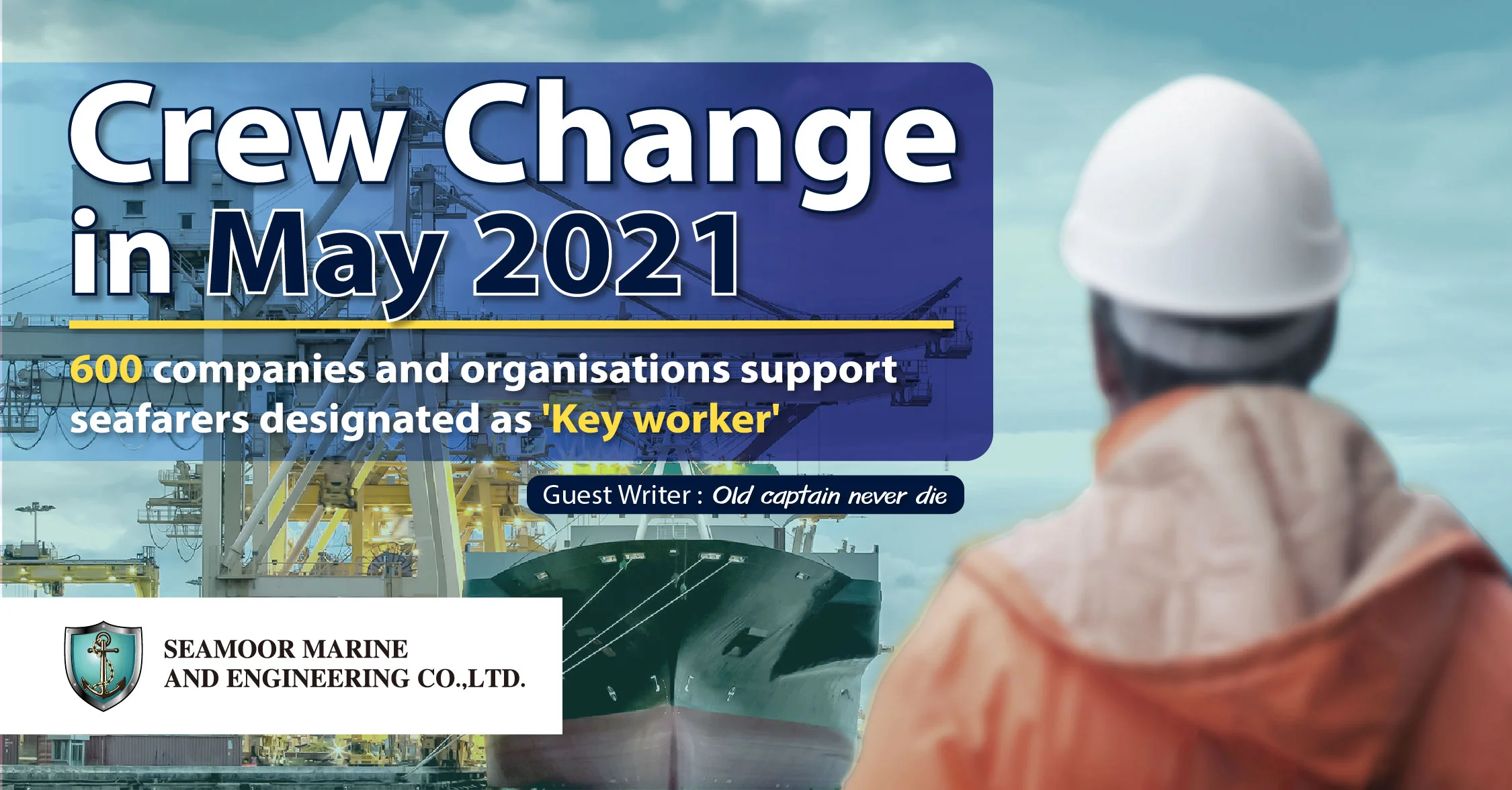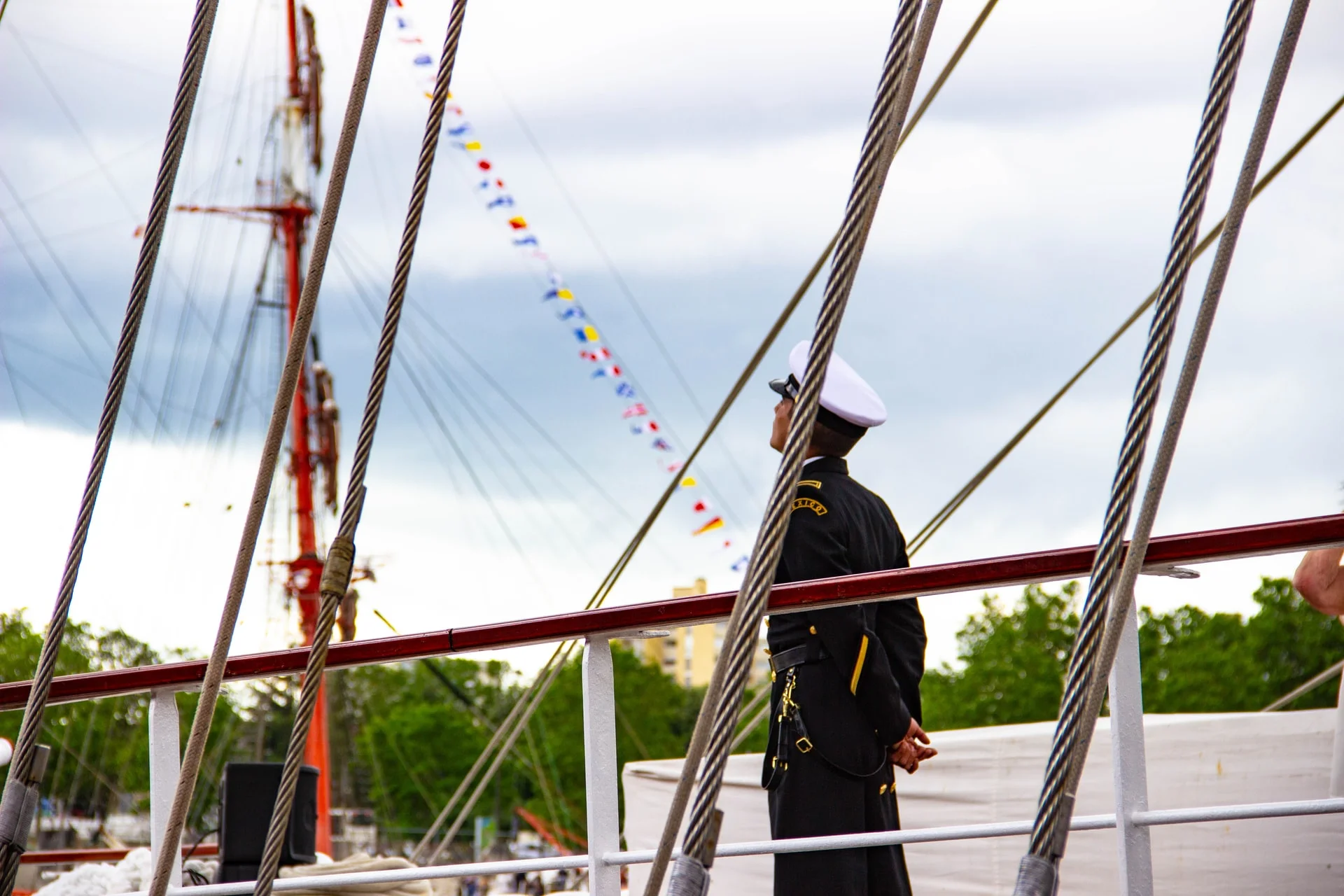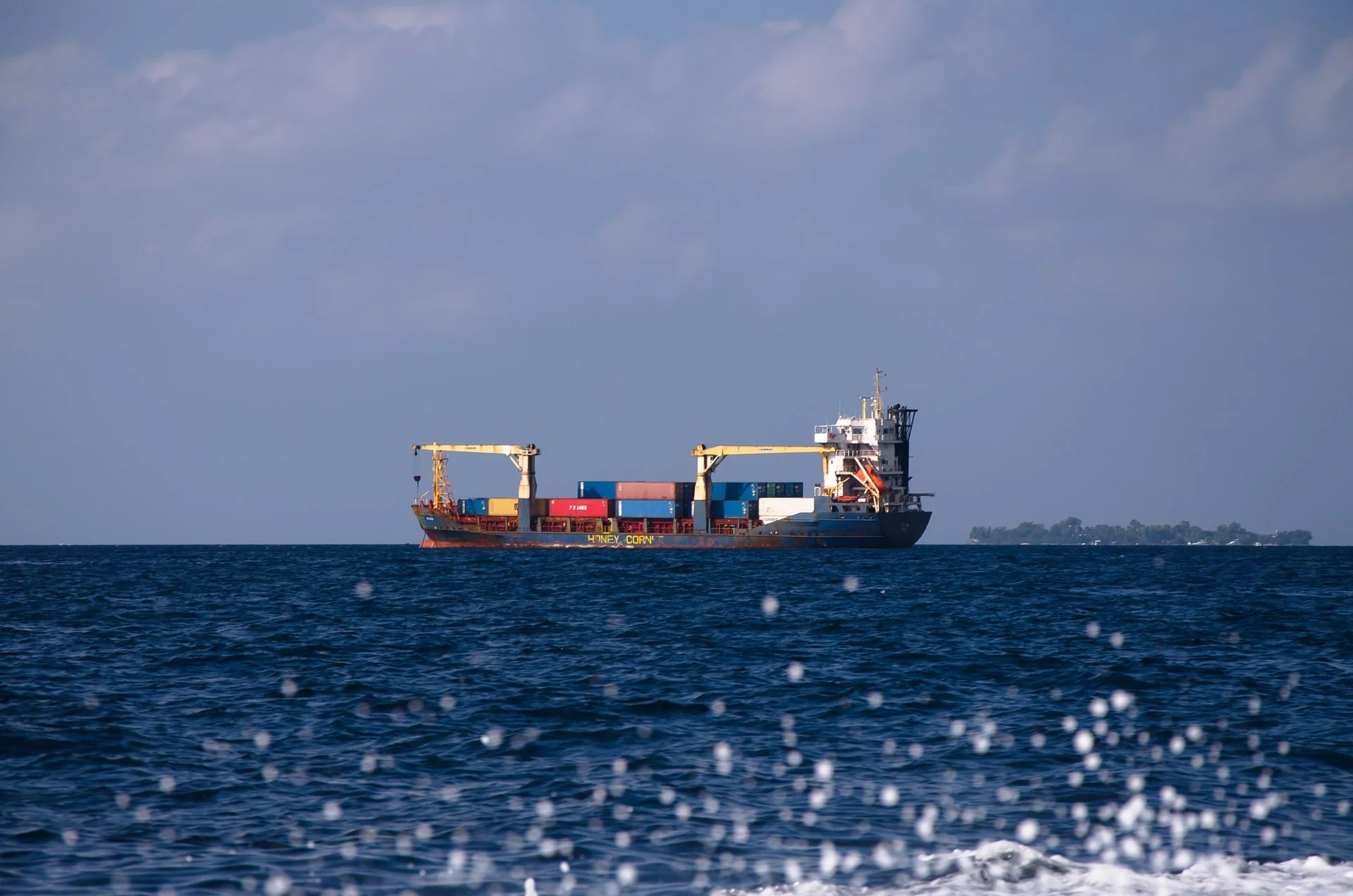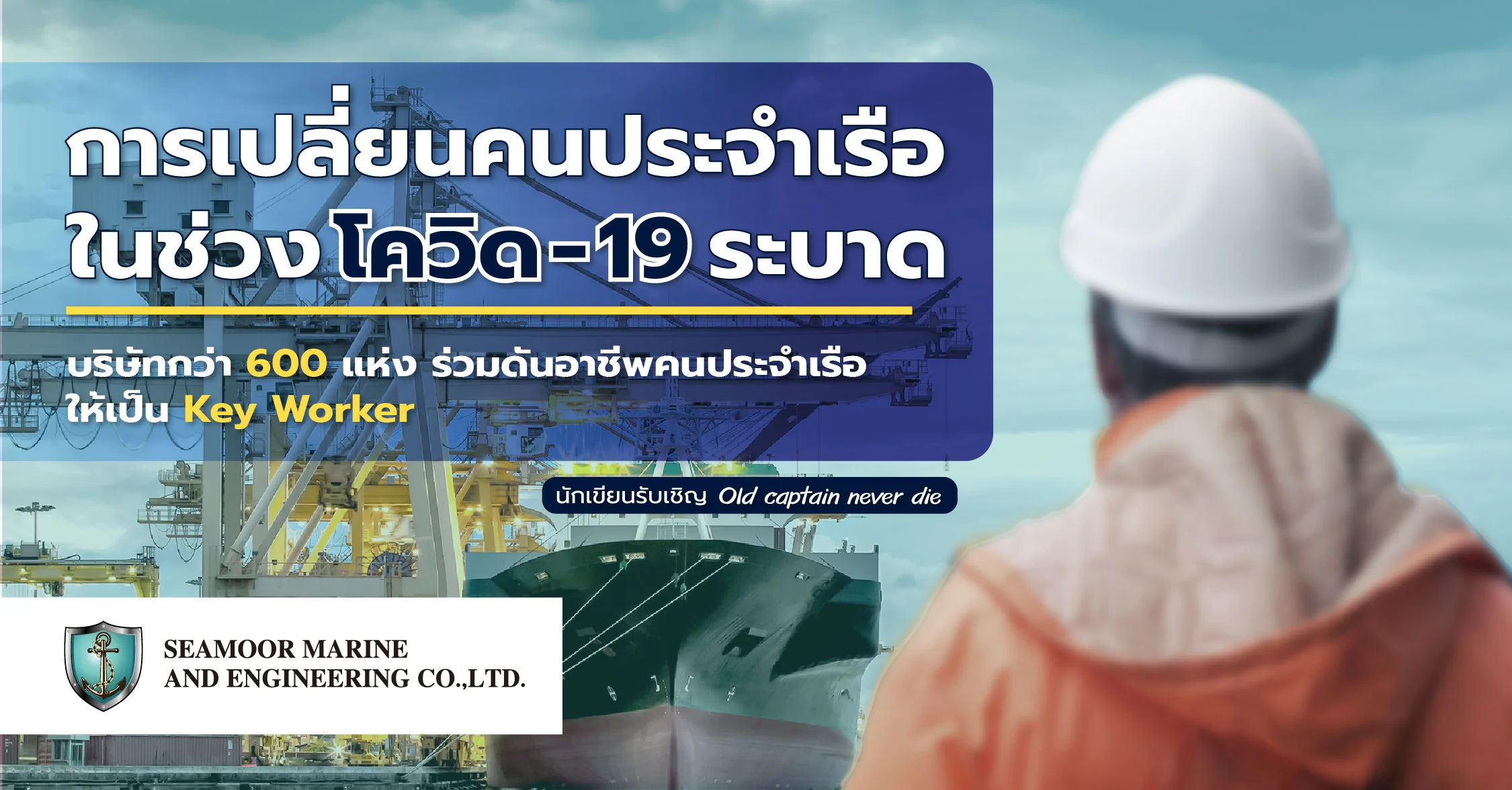As Covid-19 pandemic continues, not only do seafarers concern about the infection when traveling and delivering goods to various ports especially the ones with a serious situation, but also about an unexpected and unsettled crew change procedure. If crew change is able to happen, each seafarer surely must go through a series of complex measures. Seafarers whose contract has already expired cannot return home, and ones who want to return to work cannot go on board because of difficulties in rules and regulations on crew change of the port and the shipowner. The whole shipping industry is directly affected by this. Shipping lines now worry that the number of seafarers as a result of crew change crisis is increasing and will negatively cause an impact on daily business operations.
The latest analysis on the shipping industry shows there are over 400,000 seafarers who face crew change crisis and want to return home. However, with every port state strictly leveling up its measures for crossing borders and traveling and an emerging of the spreading of new species Covid-19, crew change is increasingly difficult.
Presently, IMO 55 member states and 2 associate members have announced that seafarers may have to work on board longer than the contract period to avoid risks of infection during crew change. But, those states have been criticised by International Labour Organization (ILO) for its failure to protect seafarers’ rights, opposing Maritime Labour Convention 2006 (MLC 2006) which states that seafarers’ rights must be protected without delay. The United Nations has stepped up to encourage every port state to accept seafarers as key workers which have to be taken care of ‘without delay’.
Moreover, the vaccine allocation for seafarers in many countries needs to be rearranged. There is an issue of a vaccination certificate which can become a great limitation for seafarers in developed countries because the possibility of getting the vaccine would not be before July 2021.
Photo by Philippe Oursel on Unsplash
And, the government of many port states still closes its border and suspends traveling to prevent and reduce risk for the spreading of Covid-19. These include temporarily not allowing crew change and banning seafarers to disembark when arriving at the port. As a result, many seafarers have been held onboard even their contracts have expired. Yet, there is no clear resolution on the issue from IMO member states.
On 1 December 2020, the UN General Assembly unanimously adopted resolution on international cooperation to address challenges faced by seafarers as a result of the Covid-19 pandemic to support global supply chains. Indonesia, one of an important supplier of maritime labour market, served as a facilitator of the negotiation, supported by UNCTAD, ILO and IMO.
The resolution from 71 countries are as follow:
- Urges member states to designate seafarers and other marine personnel as key workers.
- Encourages government and other stakeholders to implement the IMO protocols to ensure safe crew change and travel during the Covid-19.
- Calls upon government to promptly implement relevant measures to facilitate maritime crew change, including enabling their embarkation and disembarkation, expediting travel and repatriation efforts, and ensuring access to medical care.
Later in January 2021, these calls were recognised. More than 600 companies and organizations had signed a declaration on seafarer wellbeing and crew change, admitting their shared responsibility to resolve the crew change crisis.
For seafarers, all concerning issues include a broad range of human rights and applicable labour standards, aiming to ensure that their working and living conditions comply with the MLC 2006, and other relevant instruments, guaranteeing their health, safety, security, and welfare.
Though there is a gradual easing, many countries still keep restrictions on crew change under conditions such as travel history and/or crew nationalities. In addition, seafarer encounter with several problems applying VISA to entry any countries for signing on vessels. It results that the crew change situation is more complicated. Clearly, crew change and repatriation of seafarers remain big challenges for stakeholders and need to be facilitated.
A possible solution can be done by improving existing international legal instruments, particularly several relevant conventions. Some formalities and required documents may be reduced to facilitate and simplify crew change, including repatriation, transit and joining ships. These could ease the crew change crisis during the ongoing Covid-19 and further.
A Good Model of Country with Good Crew Change Management
While crew change crisis in many countries is left unsolved, some have settled a good management for it. The country, for example, is Singapore. We will take a look at how Singapore can facilitate crew change.
Singapore has issued restrictions on crew change for ships sailing in ports of Singapore as followings:
- Crew whose employment contract has expired.
- Additional crew on board whose sign-off would not affect the safe manning of the ship.
- Change of crew due to the sale or purchase of ship.
- Personnel who are not part of the ship’s crew such as superintendents and service engineers.
- Compassionate grounds e.g. death of a family member.
- Crew who is no longer medically fit to work onboard the ship.
The requirements for signing-on and signing-off in Singapore are as follows:
For crew signing-on
- In general, all signing-on crew are required to serve 14-day Stay-Home-Notice (SHN) in the crew’s originating country/region in the period immediately prior to his/her departure flight/ferry to Singapore. The crew should be completely isolated in a room with a dedicated toilet with strictly no interaction with others (including family members) at his/her place of residence, or serve the SHN in a dedicated facility/hotel.
- Crew from specific low risk countries/regions will either no longer be required to serve the SHN or serve a shorter SHN of 7 days in his/her originating country/region prior to departure to Singapore. The latest list of low risk countries/regions is announced by Singapore.
- The crew must have a negative result from a Covid-19 test polymerase chain reaction (PCR) type [PCR is a test performed by collecting sample from nostrils or nasal cavity to detect the virus. If the virus is detected in a lung, sputum must be collected for testing.] taken at a government-approved or ISO 15189-accredited testing facility at his/her originating country not more than 72-hours prior to departure for Singapore.
- The crew must be certified fit-to-travel by a doctor at his/her originating country not more than 24 hours prior to departure for Singapore.
- During the entire crew change process, including during the journey to Singapore, the crew should not be in a group of more than five persons, and must remain in the same group. There must be no interactions between groups.
- The crew should only join his/her ship not more than two days before the ship’s final departure from Singapore. Ships departing for sea trial and returning to Singapore are not considered final departure.
- Crew shall only join the ship in Singapore after all high-risk shore-based personnel have completed their work on board and disembarked the ship.
- Meet-and-greet services must be arranged for sign-on crew arriving at Changi Airport, to escort the crew from the moment they disembark the plane to the point where they are handed over to the agent for the direct transfer to the ship or designated holding facility.
- Crew who have recovered from Covid-19 must submit documentary proof of his/her past diagnosis of Covid-19 based on the earliest positive PCR test result.
-
- If the date of the positive PCR test result is 21 days or fewer before the date of arrival in Singapore, he/she will not be approved for crew change.
- If the date of the positive PCR test result is between 22 to 180 days before the date of arrival in Singapore, the recovered crew need not to serve the SHN at his/her originating country/region not take a Covid-19 PCR test within 72 hours before departure for Singapore. If he/she develops symptoms prior to departing for Singapore, he/she must be tested for Covid-19.
- If the positive PCR test result is more than 180 days before the date of arrival in Singapore, he/she must serve a 14-day SHN at his/her originating country and take a Covid-19 test within 72 hours before departure for Singapore.
For crew signing-off
- The crew must not have gone ashore in the last 21 days before disembarking the ship, must have remained well and not had contact with any known or suspect case of Covid-19 throughout that period.
- The crew shall refrain from interacting with shore-based personnel at previous ports of call in the last 21 days.
- The crew must be certified fit-to-travel by a doctor in Singapore not more than 24 hours before disembarking the ship. Tele-medicine can be used to obtain a fit-to-travel assessment and certification. MPA will accept fit-to-travel certificates issued by Singapore-Medical-Council-fully-registered doctors meeting the requirements of MPA.
- Crew subjected to serology test shall remain onboard until production of a negative Covid-19 serology test result.
This is an interesting example of strict restrictions to prevent crew from possible infection and spread during crew change. We can learn and adapt to our situation. However, such level of restrictions is needed to be met and maintained. If we fail to keep it up, there would be possibility that the crew can become a carrier bringing the virus from shore to ship or vice versa.
Guest Writer: Old captain never die
Update: 14.May.2021






